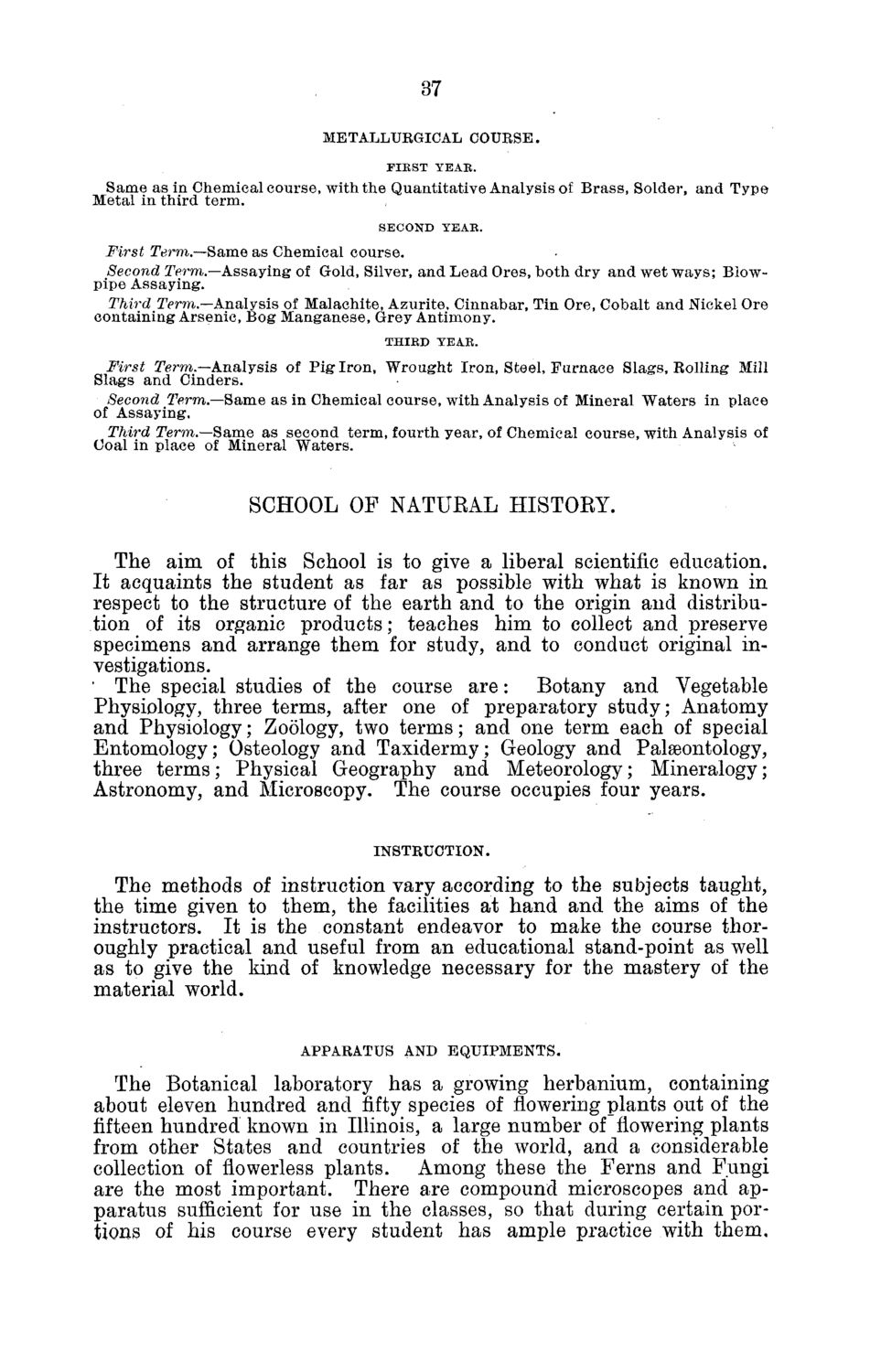| |
| |
Caption: Board of Trustees Minutes - 1882
This is a reduced-resolution page image for fast online browsing.

EXTRACTED TEXT FROM PAGE:
37 METALLTJKGICAL COURSE. FIBST YEAE. Same as in Chemical course, with the Quantitative Analysis of Brass, Solder, and Type Metal in third term. SECOND YEAE. First Term.—Same as Chemical course. Second Term.—Assaying of Gold, Silver, and Lead Ores, both dry and wet ways; Blowpipe Assaying. Third Term.—Analysis of Malachite, Azurite, Cinnabar, Tin Ore, Cobalt and Nickel Ore containing Arsenic, Bog Manganese, Grey Antimony. THIED YEAE. First Term.—Analysis of Pig Iron, Wrought Iron, Steel, Furnace Slags, Rolling Mill Slags and Cinders. Second Term.—Same as in Chemical course, with Analysis of Mineral Waters in place of Assaying. Third Term.—Same as second term, fourth year, of Chemical course, with Analysis of Coal in place of Mineral Waters. SCHOOL OF NATUEAL HISTOEY. The aim of this School is to give a liberal scientific education. It acquaints the student as far as possible with what is known in respect to the structure of the earth and to the origin and distribution of its organic products; teaches him to collect and preserve specimens and arrange them for study, and to conduct original investigations. ' The special studies of the course are: Botany and Vegetable Physiology, three terms, after one of preparatory study; Anatomy and Physiology; Zoology, two terms; and one term each of special Entomology; Osteology and Taxidermy; Geology and Palaeontology, three terms; Physical Geography and Meteorology; Mineralogy; Astronomy, and Microscopy. The course occupies four years. INSTRUCTION. The methods of instruction vary according to the subjects taught, the time given to them, the facilities at hand and the aims of the instructors. It is the constant endeavor to make the course thoroughly practical and useful from an educational stand-point as well as to give the kind of knowledge necessary for the mastery of the material world. APPARATUS AND EQUIPMENTS. The Botanical laboratory has a growing herbanium, containing about eleven hundred and fifty species of flowering plants out of the fifteen hundred known in Illinois, a large number of flowering plants from other States and countries of the world, and a considerable collection of flowerless plants. Among these the Ferns and Fungi are the most important. There are compound microscopes and apparatus sufficient for use in the classes, so that during certain portions of his course every student has ample practice with them.
| |